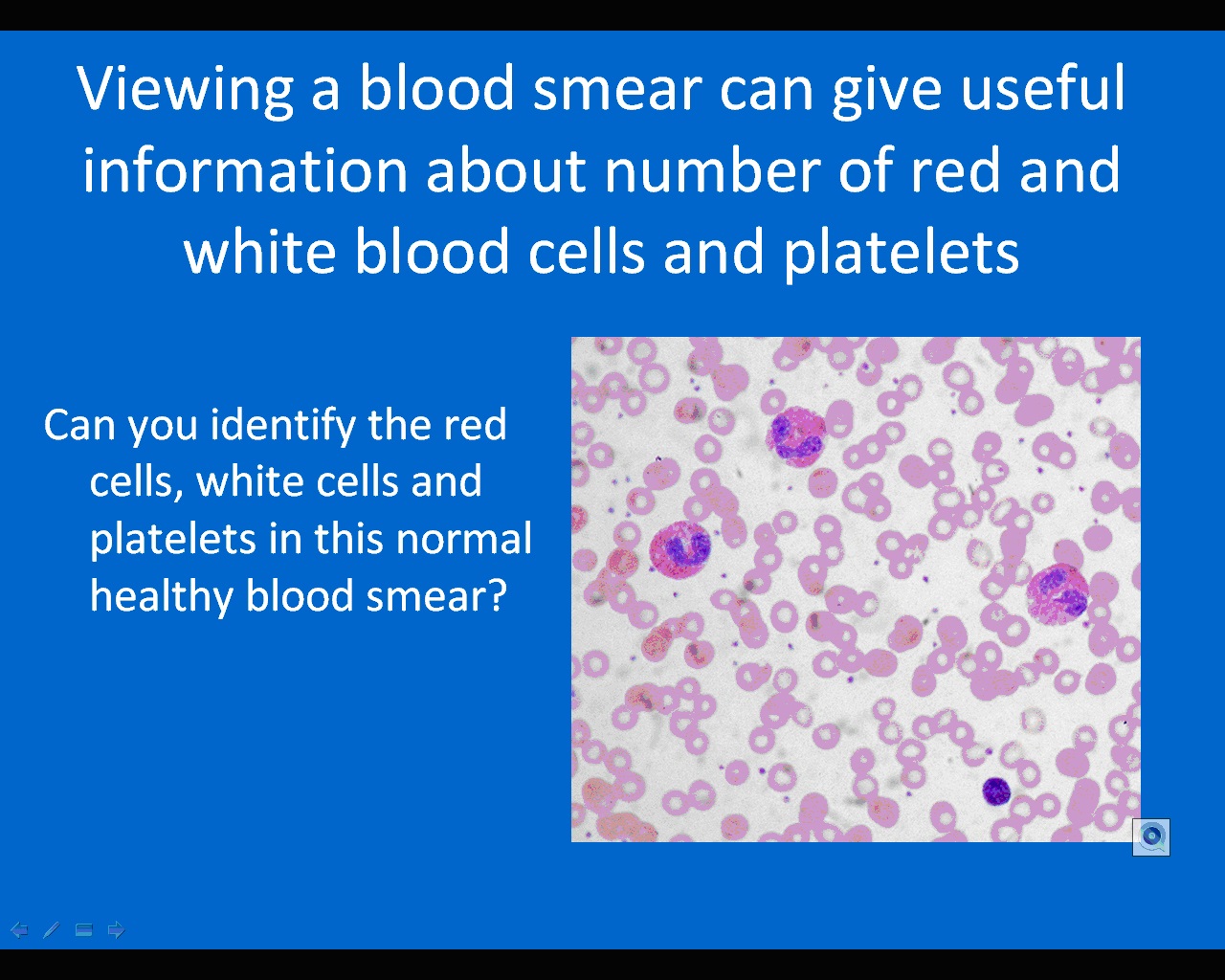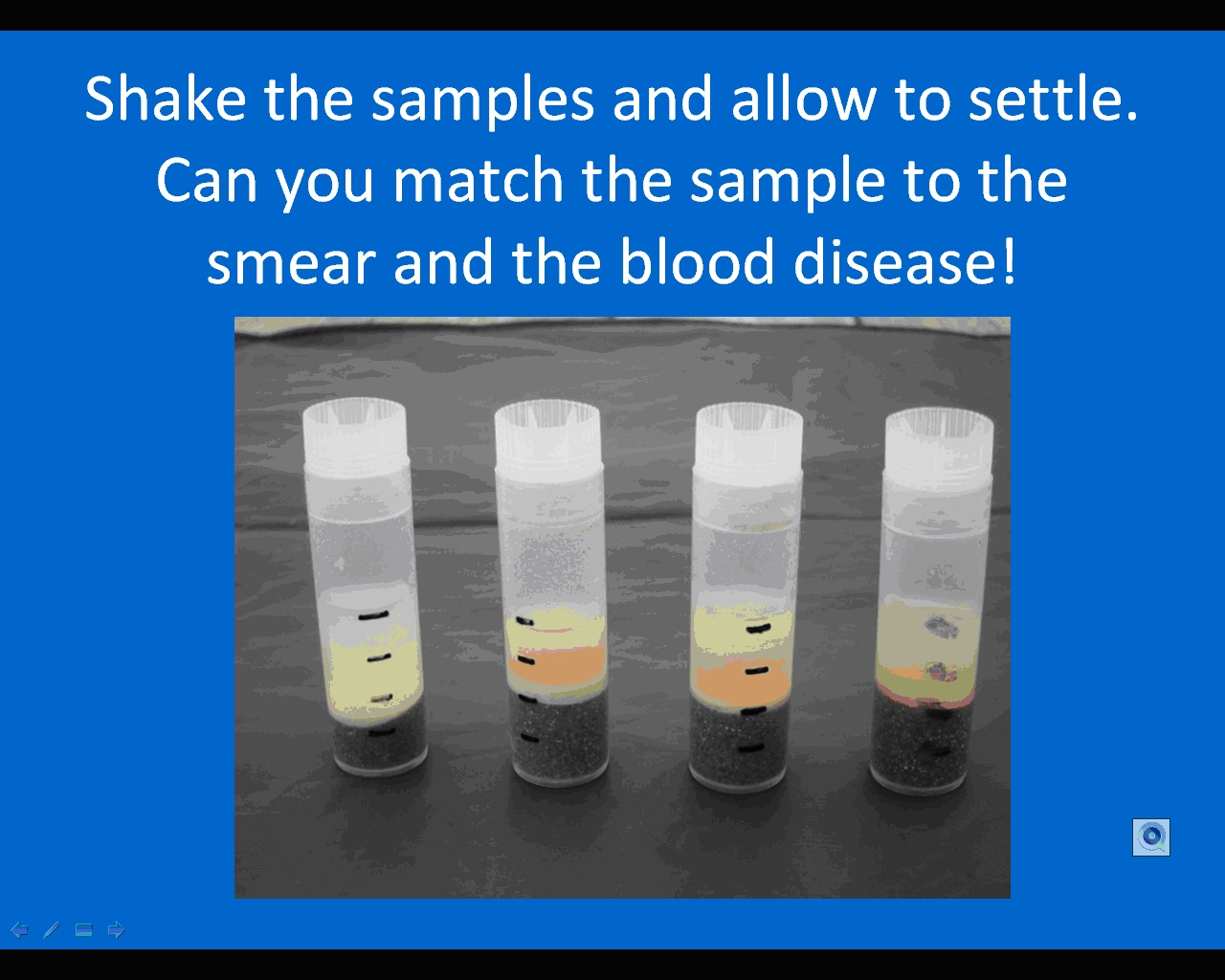| Learning aims: |
|
Students have to design a model by using of which they can show how to count the number of particles in a given volume and propose a model of sedimentation. |
| Materials: |
|
a photo of blood smear, fine starch (powder), household semolina or corn flour, water, a glass (glass beaker), teaspoon, timer, detergent, worksheet |
| Suggestions for use: |
|
Ask students what they know about composition of the blood (application attached):
Picture and question: Alison Graham Exercise 1 Blood count Ask students why doctors want to know patient’s blood count. Students are asked to look at the photo. They are supposed to name different objects they see.
Photography: Edita Pauliková Let them express their assumption about different objects seen in the photo and what these objects may represent. Ask students to design a way to determine the number of different blood cells in a given volume of blood. They should invent a model to explain their procedure on. One of the possibilities is to put a grid over the photo, count the red blood cells in three windows of the grid, make an average and multiply it by the number of windows. In this case, however, we need to know the volume of blood that we see in the field of vision or in one window. White blood cells (leukocytes) can’t be counted this way because there are few of them in comparison with red blood cells (erythrocytes). Students can invent a model in which they substitute blood cells with marbles or small candies and fill a one-litre jar with them. In order not to count all the marbles or candies, it is enough to count them in a smaller jar with the volume of let say 50 ml and work out the number for the whole volume. Ask students how to increase accurateness of the estimate of the small particles number in a large volume. Then they should find out optimal values of blood count on the Internet or in professional literature. Exercise 2 Sedimentation Provide students with different aids and the worksheet to plan their experiment. Alternatively, they may use a notebook to write and draw their findings and results. Ask students to design and carry out an experiment to observe the speed of sedimentation.
Photography and task: Alison Graham Photography: Ružena Cehľarová Let them try to explain why erythrocytes fall down to the bottom faster when there is an inflammation in the patient’s body. The speed of blood cells sedimentation is determined by viscosity of plasma. Viscosity depends on the ratio of the present plasma proteins. During an illness, representation of proteins in plasma changes as a result of an immune reaction, and thus viscosity changes, too. Students may come to the conclusion about viscosity only based on a new experiment with a sedimentation model after they find out that adding a detergent into water increases speed of sedimentation and they will start to search for the reason of the phenomenon.
Picture and task: Alison Graham |
| Possible questions: |
|





